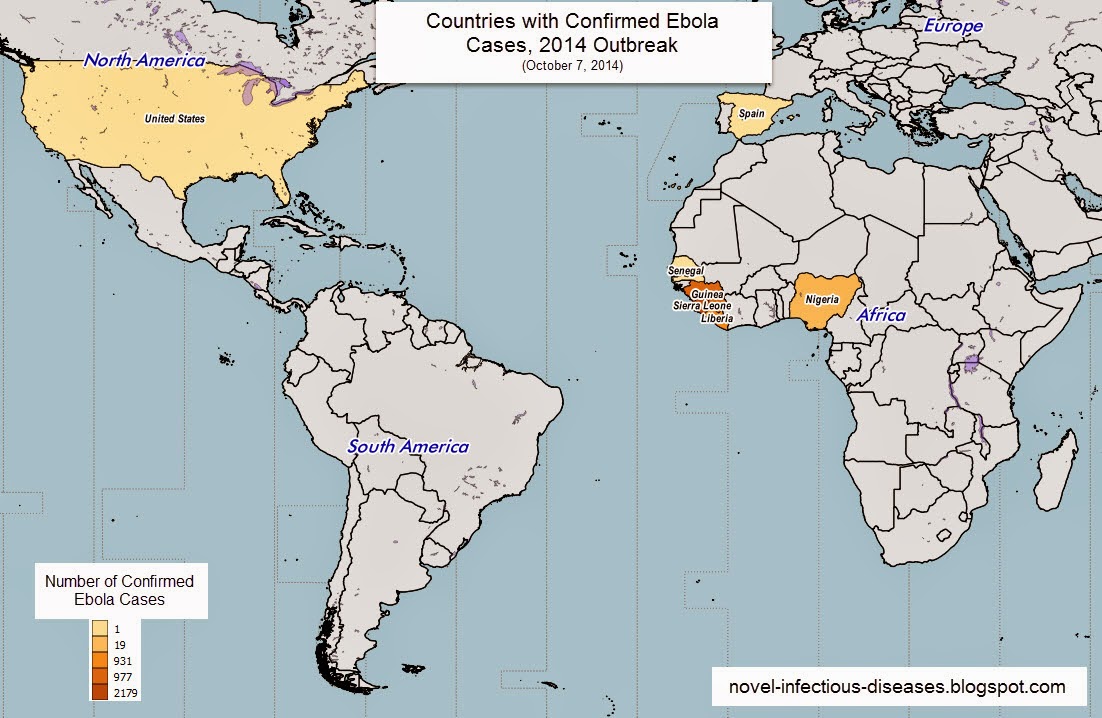As of October 16, 2014, the World Health Organization (WHO) reported
a total of 877 cases of Middle East respiratory virus syndrome (MERS) from WHO member
states (through October 11, 2014 link). The European Centre for Disease Prevention and
Control (ECDC), a European disease
monitoring organization established in 2005 (link),
has reported a total of 906 MERS cases from around the world through October
21, 2014 (link). Both WHO and ECDC provide updates on
the MERS outbreak, however neither these agencies provides a publicly available
line list of cases.
Because it appears that the next MERS wave has started on the greater Arabian Peninsula
in the Middle East, is worth discussing the apparent discrepancy in the number
of MERS cases between the WHO and the ECDC.
The table below compares the current counts of MERS cases
for WHO and the ECDC through specific dates.
The differences in the case counts are discussed below by country. WHO and the ECDC enumerate cases based on the
reporting country (under IHR), rather than the source country of infection. Also included in the table below is a column
with the case counts that have been tabulated by FluTrackers.com (link). The FluTrackers’ case counts are not directly
comparable to the WHO or ECDC data because the FluTrackers’ counts are based
on the country of the source of infection not the reporting country.
There are minor discrepancies between the WHO case counts
and the ECDC case counts as noted in the detailed discussions below. It would be beneficial if both of these organizations would make their line list of cases
publicly available on the internet.
Discussion of table
discrepancies between WHO and ECDC
Jordan
The case count noted by WHO for Jordan does not appear to
include the seven retrospectively confirmed cases from the first MERS cluster in Jordan in
2012 (link).
Philippines
The WHO does not recognize any cases from the Philippines. At least two possible MERS cases have been reported
from the Philippines. The first was a male nurse who tested positive for MERS
in United Arab Emirates and later tested negative in the Philippines in April,
2014 (link). The second was a female nurse who was tested
in Saudi Arabia and arrived in the Philippines after the positive test results
were announced by Saudi Arabia (link). It is not clear which case, if either, of
these two cases is included as a case from the Philippines by the ECDC.
Qatar
On October 12, 2014, the Supreme Health Council of Qatar
officially announced the first MERS case in Qatar in 2014 (link),
so the WHO may report his case in the
future.
Saudi Arabia
As of October 21, 2014 the Saudi Arabia Ministry of Health web
page reports a total of 771 MERS cases. The ECDC count for MERS cases from
Saudi Arabia is 771, matching the Saudi Arabia Ministry of Health total.
The last official WHO update prior to October 21, 2014 was published on October 16, 2014 (link). At that time, the WHO case count for Saudi
Arabia was apparently 756. There is a
disparity of 15 MERS cases between the
WHO case count and the ECDC case count for Saudi Arabia. This difference appears to be a function of
differential reporting dates rather than major disparities in the case counts. Between October
11 and October 21, the Saudi Arabia Ministry
of Health reported a total of 12 MERS cases that will probably be reported and incorporated
in the WHO count in the near future.
This would bring the WHO total through October 21 to 768.
The reason for the difference of three cases between the WHO
data and the ECDC data is uncertain. Any number of additions and deletions (due
to duplicates and false positives) in the case counts could affect this differential
in the case counts.
Turkey
The first MERS case in Turkey was only reported on October
17, 2014 (link). The WHO later reported this case on October
24, 2014 (link).
United Arab Emirates
It is not clear how the ECDC determined an additional four
cases from United Arab Emirates compared to the WHO counts.






